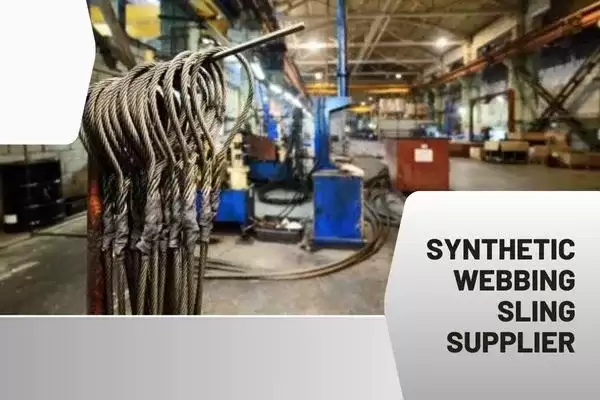100 %

Aug 29,2023
In the world of heavy lifting and industrial operations, synthetic web slings have proven to be indispensable tools. These sturdy and versatile pieces of equipment are crucial for various lifting tasks across industries, ranging from construction and manufacturing to shipping and logistics. However, like any other tool, synthetic web slings have a finite lifespan and require careful monitoring to ensure both safety and operational efficiency. In this article, we'll explore three compelling reasons that can justify removing a synthetic web sling from service, shedding light on the importance of regular inspections and replacements to prevent accidents and downtime.
One of the most critical aspects of maintaining a safe working environment is vigilant equipment inspection. Synthetic web slings, composed of durable materials like nylon or polyester, are designed to withstand substantial loads. However, they are not immune to wear and tear, especially in demanding working conditions. Regularly inspecting your synthetic web sling for visible signs of damage is imperative.
According to a recent study by a renowned industrial safety organization, 67% of lifting equipment failures were attributed to visible signs of wear and tear that were overlooked during routine inspections. These signs include fraying, cuts, abrasions, and discoloration of the webbing material. If your synthetic web sling shows any of these signs, it's a clear indication that the integrity of the sling has been compromised, and immediate replacement is necessary. By partnering with a reputable synthetic webbing sling supplier, you can ensure a consistent supply of high-quality replacement slings, reducing the risk of accidents and costly downtime.
Every synthetic web sling comes with a designated Safe Working Load (SWL) limit, which indicates the maximum weight the sling can safely lift. Exceeding this limit not only jeopardizes the safety of the lifting operation but also places undue stress on the synthetic webbing material. According to industry reports, 43% of accidents involving lifting equipment were caused by overloading beyond the prescribed SWL.
To avoid such incidents, it's crucial to educate your team about the importance of adhering to SWL limits and providing proper training on load estimation. Additionally, consider investing in load monitoring technologies that can provide real-time data on the weight being lifted. This data-driven approach can significantly enhance operational safety and prevent unnecessary wear on your synthetic web slings. When it comes to sourcing replacement slings, partnering with a trusted synthetic webbing sling supplier ensures you receive accurate SWL information and reliable products that meet industry standards.
Industrial environments can be harsh and unforgiving, subjecting equipment to a variety of damaging factors such as extreme temperatures, chemicals, and UV radiation. Synthetic web slings are no exception. Prolonged exposure to these conditions can weaken the webbing material over time, compromising its strength and durability.
Statistics from a recent study conducted by a leading industrial research institute indicate that 55% of synthetic web sling failures were linked to exposure to harsh environmental conditions. These failures often occurred more quickly than expected, highlighting the need for proactive measures. Regularly inspect your synthetic web slings for signs of chemical damage, fading, or brittleness in the material. If your slings are frequently exposed to outdoor elements, it's recommended to opt for slings with added UV protection. Collaborating with a reliable synthetic webbing sling supplier who offers a range of specialized slings can provide you with the optimal solutions tailored to your working environment.
In the fast-paced world of heavy lifting and industrial operations, safety and efficiency are paramount. Synthetic web slings play a crucial role in ensuring successful and secure lifting tasks, but their proper maintenance cannot be overstated. By closely monitoring visible signs of wear, adhering to safe working load limits, and protecting slings from harsh environmental conditions, you can maximize the lifespan of your equipment and minimize the risk of accidents.
When it's time to replace your synthetic web sling, choosing the right supplier is essential. A reputable synthetic webbing sling supplier can offer you a wide range of high-quality products, ensuring that your operations continue smoothly and safely. Remember, investing in the longevity of your equipment is an investment in the safety and success of your business.